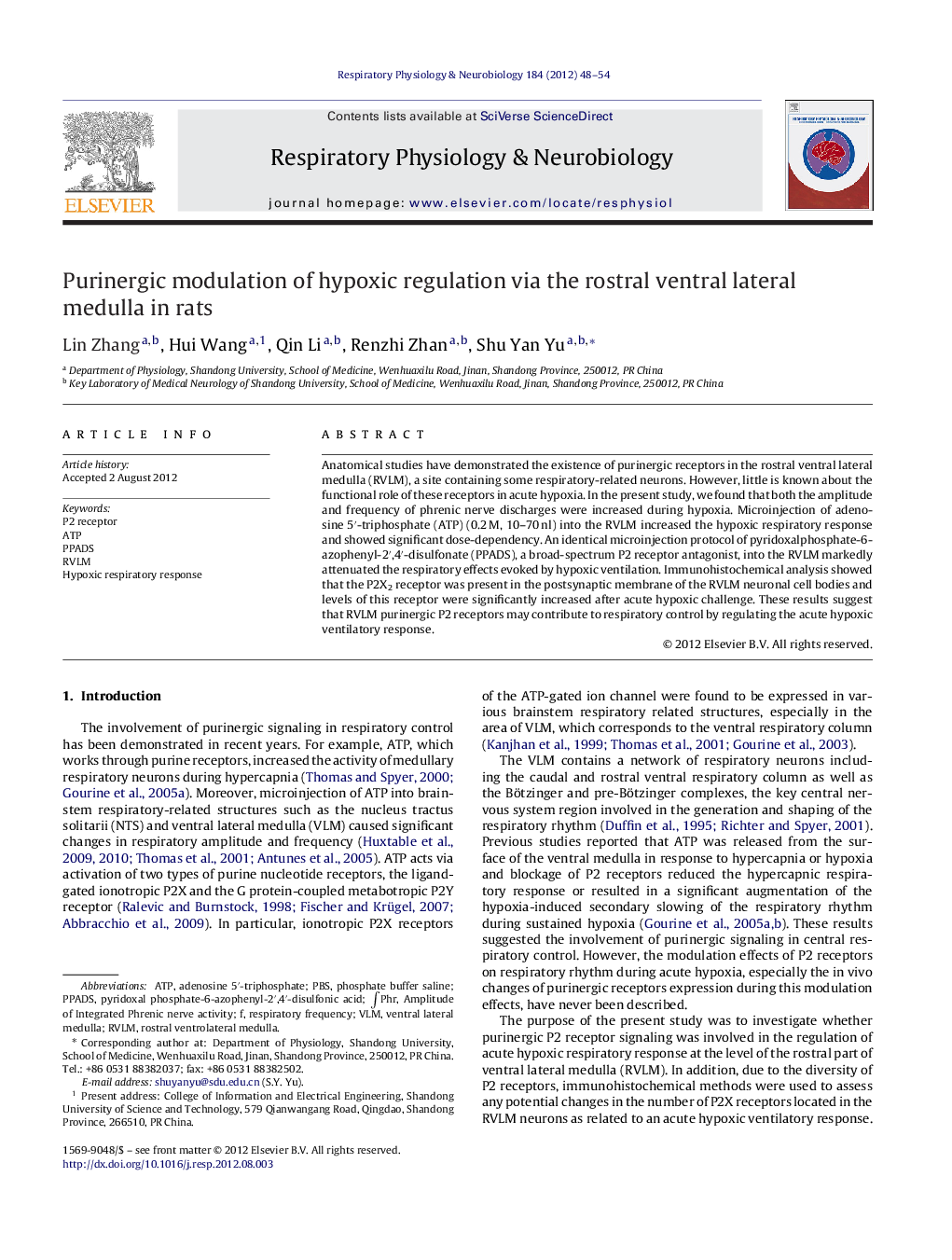| Article ID | Journal | Published Year | Pages | File Type |
|---|---|---|---|---|
| 5926290 | Respiratory Physiology & Neurobiology | 2012 | 7 Pages |
Anatomical studies have demonstrated the existence of purinergic receptors in the rostral ventral lateral medulla (RVLM), a site containing some respiratory-related neurons. However, little is known about the functional role of these receptors in acute hypoxia. In the present study, we found that both the amplitude and frequency of phrenic nerve discharges were increased during hypoxia. Microinjection of adenosine 5â²-triphosphate (ATP) (0.2Â M, 10-70Â nl) into the RVLM increased the hypoxic respiratory response and showed significant dose-dependency. An identical microinjection protocol of pyridoxalphosphate-6-azophenyl-2â²,4â²-disulfonate (PPADS), a broad-spectrum P2 receptor antagonist, into the RVLM markedly attenuated the respiratory effects evoked by hypoxic ventilation. Immunohistochemical analysis showed that the P2X2 receptor was present in the postsynaptic membrane of the RVLM neuronal cell bodies and levels of this receptor were significantly increased after acute hypoxic challenge. These results suggest that RVLM purinergic P2 receptors may contribute to respiratory control by regulating the acute hypoxic ventilatory response.
⺠Hypoxic ventilation facilitate the phrenic nerve discharge. ⺠Microinjection of ATP into RVLM facilitate the hypoxia-induced respiratory response. ⺠Microinjection of PPADS into RVLM attenuate the hypoxia-induced respiratory response. ⺠The P2X2 receptors expression was up-regulated in RVLM after acute hypoxia.
